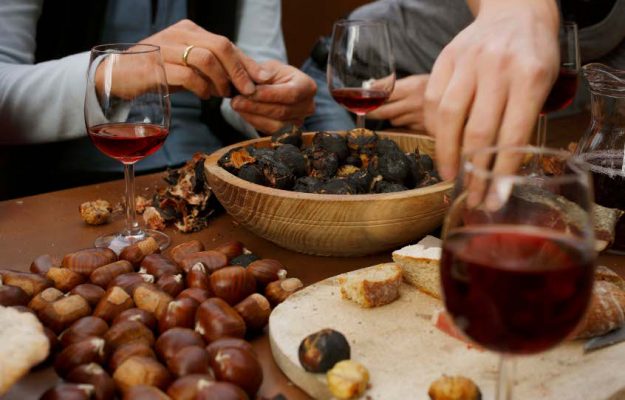Now more a niche ritual than a mass product, the Novello, the first wine of the 2019 vintage, is back on the tables of Italians, with 2 million bottles on the market as usual from the last day of October, three weeks before the competitor Beaujolais nouveau French, which, as Coldiretti recalls, is possible to taste from the third Thursday of the month, so on November 21. Light and with an aromatic bouquet, the “wine to drink young” owes its characteristics to the method of vinification used, developed by French researcher Flanzy, and is based on the carbonic fermentation of whole bunches of grapes that are then pressed at a distance of about ten days, for a delicate wine, which usually stands at 11 degrees, but that can reach even 12.
The production of Novello in Italy, recalls Coldiretti, began in the mid-seventies, after in France, considered the mother of new wines, the Beaoujolais vintners, to overcome a market standstill, put on the market the Beaoujolais Nouveau, to enhance their wine produced with Gamay grapes, less prized in southern Burgundy. The new wine made in Italy, based instead on PDO and PGI grapes, has therefore recorded a rapid expansion, reaching a peak of 17 million bottles ten years ago, and then gradually decreased to the current 2 million. The reason for the drop in production there are several factors, from the limited shelf life, which suggests that it should be consumed over the next six months, to the production technique, carbonic maceration, which is 20 % more expensive than traditional maceration. But above all, Coldiretti recalls, the same vines that in the past represented the basis of Novello are today often used to produce wines that are equally young, ideal for aperitifs, but that do not present problems of duration.
Tradition has it that the opening of the new wine is celebrated in San Martino on 11 November, the day on which the farmers have always closed and made the balance of a year’s work, and it is natural and inevitable its consumption combined with autumn products, such as roasted chestnuts that this year, concludes Coldiretti, show a fall of 30% compared to 2018, due to adverse weather and the attack of alien insects, for a national production of fewer than 25 million kilograms.
Copyright © 2000/2025
Contatti: info@winenews.it
Seguici anche su Twitter: @WineNewsIt
Seguici anche su Facebook: @winenewsit
Questo articolo è tratto dall'archivio di WineNews - Tutti i diritti riservati - Copyright © 2000/2025









































































































































































































